Cover image: Youth from Acayucan, Veracruz, during a workshop organized by the Altepee collective. Photo: Santiago Navarro F
The memory of another time is kept between the fine lines of its grain, the whisper of the forest, the harmony and song of the birds that once perched on its leafy crown. Today, the cedar tree has been cut down and lies mutilated. Parts of the trunk will beautify a floor or be converted into expensive furniture, and perhaps nobody will take account of the memory it holds. But a piece of the trunk, a very small piece, was rescued. The intention isn’t modest. It is to convert the wood into an instrument that moves the body and memory.
Sael Blanco remembers that more than a decade ago he was given a piece of wood in a workshop he attended in a community in Veracruz, Mexico. “I was only a spectator of what was taking place and they gave it to me,” he shares letting off a smile.

Sael working in the Altepee collective’s workshop.
The Veracruz native had attended a workshop to learn to make jaranas jarochas (small guitar-like instrument) made with cedar wood. There he built his instrument of struggle, the jarana made of cedar. This is one of the instruments providing life and rhythm to the festivity known as fandango or huapango, which is celebrated principally in the states of Veracruz, Oaxaca, and Tabasco, in the south-southeast of Mexico.
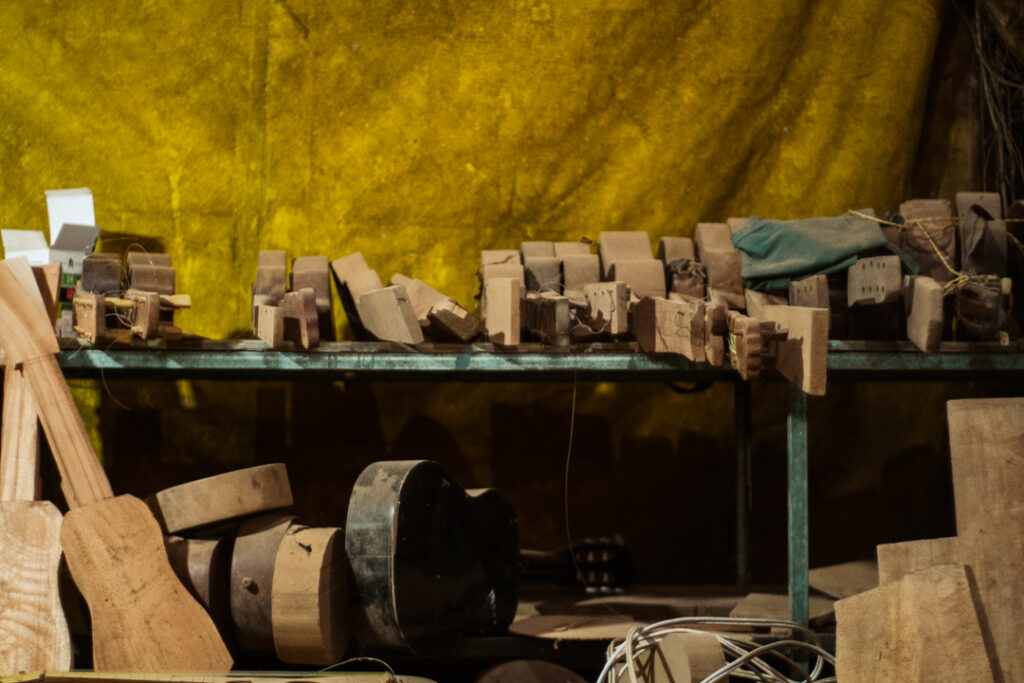
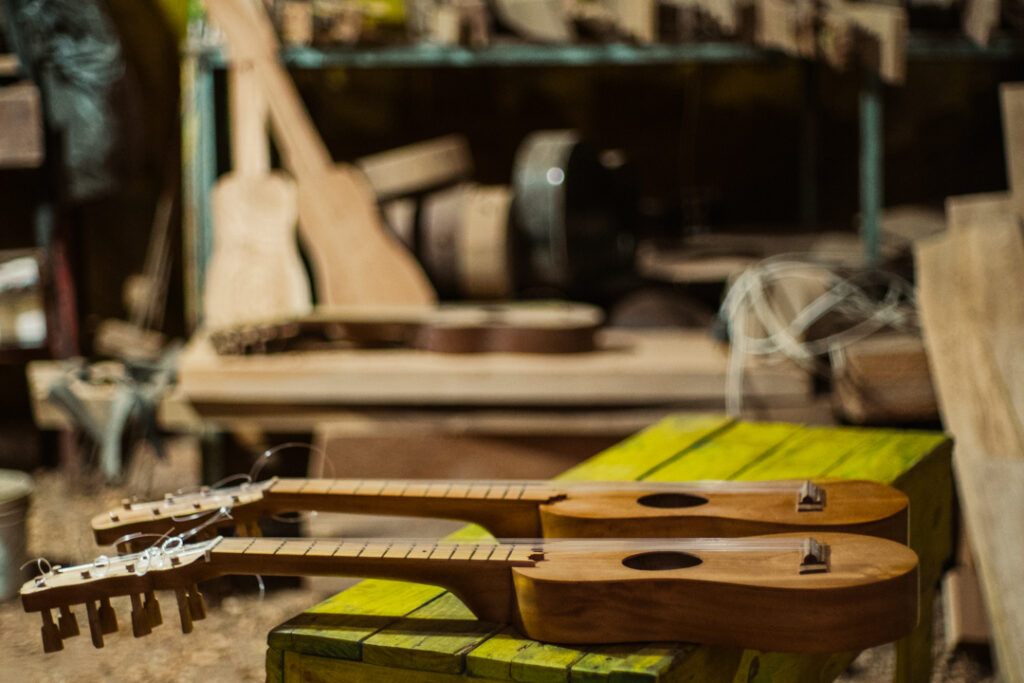


Members of the Altepee collective in their workshop making various string instruments. Photos: Santiago Navarro F
The fandango is a magnificent party with singing in verse, replicated by the attendees. The heels of those who take the stage make hearts beat with the sound of the jaranas. “Today it is music that is played in different parts of the world. But 12 or 15 year ago, this music was underappreciated, and only played by older people in their 70’s and 80’s,” shares Blanco.
Among the turns and stomps that mark the music’s rhythm, there was a moment when together those who brought joy to different festivities in the neighboring communities, they decided to create the Altepee collective. “This collective emerged from the need to preserve this music, which is of campesino origin. Amongst friends we began giving workshops to share this knowledge,” says the jaranero to the Avispa Midia team.
The idea of rescuing this combination of sounds was something that vibrated with members of the group. Then a question arose: “What are saving the music from? In reality the music had continued existing and always had a very large importance in these territories. It wasn’t necessarily being lost, we just didn’t approach the communities as young people who lived in the city,” shares Gemaly Padua Uscanga, an afro-descendant woman, also a co-founder of Altepee.
Fourteen years have passed since these young people, now adults with children, began workshops to share and learn from the music. Above all, that is what fandango means. “We realized it was more complicated than just playing the instruments. A campesino has to work his land, he has to eat and cover his basic necessities. And for those from urban spaces, to be campesino is synonymous with poverty. Nobody wants to be a campesino, much less the youth. So, we turned our gaze to the rural sector,” relates Blanco.
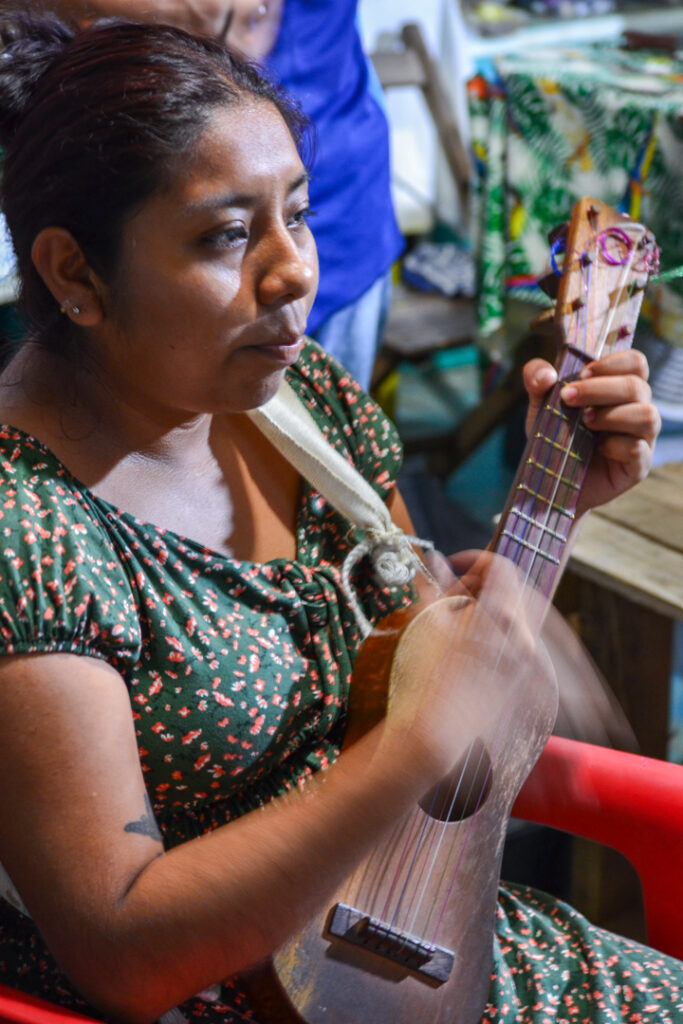
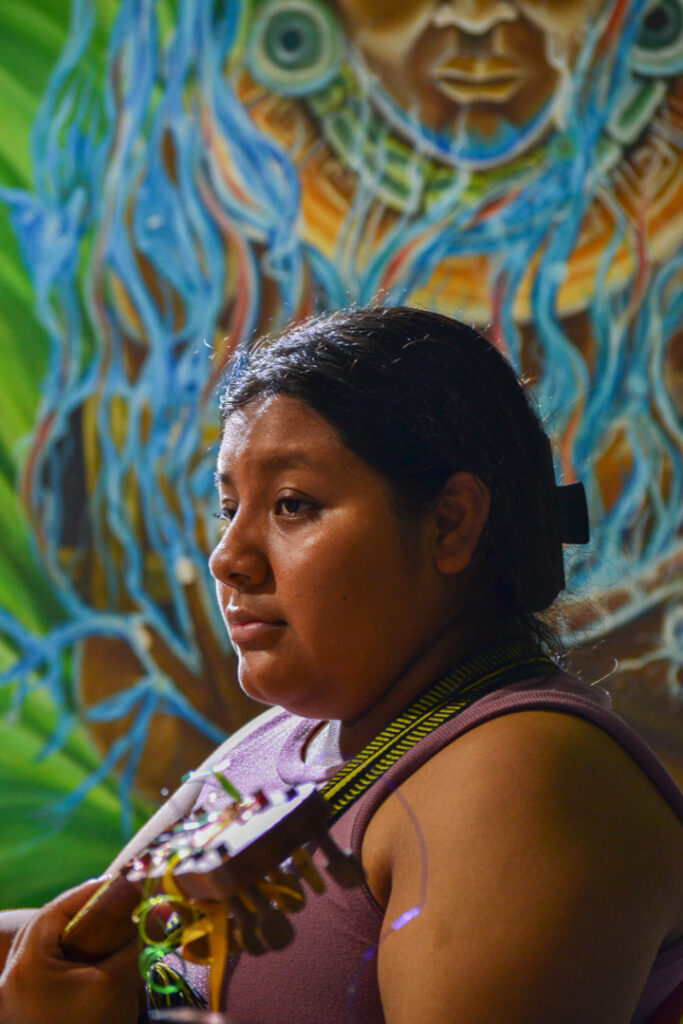
Youth of Acayucan, Veracruz participate in workshops given by the Altepee collective. Photos: Renata Bessi
Not only is it the music that makes up a fandango, there is an entire organizational process which includes organizing the food for dozens of people, creating the conditions for coexistence, as well caring for the community. “The musicians not only play the jarana. It is part of the entertainment, but it is also a service they offer to their communities. In addition, they have to grow their food, take care of the forest, water, and animals. The knowledge is linked to the territory, to its care and defense,” shares Padua with the Avispa Midia team.
The Defense of Memory and Territory
Beyond the music, the collective has maintained a process of constant learning and training in Acayucan, Veracruz, where they are located. Alongside the music and festivities, members began organizing independent media activities using online radio, making video-documentaries, silk-screening, and drawing. They have immersed themselves in exploring traditional medicine and other activities, like the defense of memory and territory.
“Because the fandango and the festivities have the power to convoke us, to gather and organize us, to propose possible solutions to a problem. It is not the same to convoke a meeting where nobody shows up. Rather, music has the power to convoke. The fandango can’t take place without people,” says Padua.
Among the materials they have documented are elders in the community who made music, and participated in the fandango. “Some of these older folks have already passed away. Their memory is recorded so we can continue sharing it,” says the singer with joy.
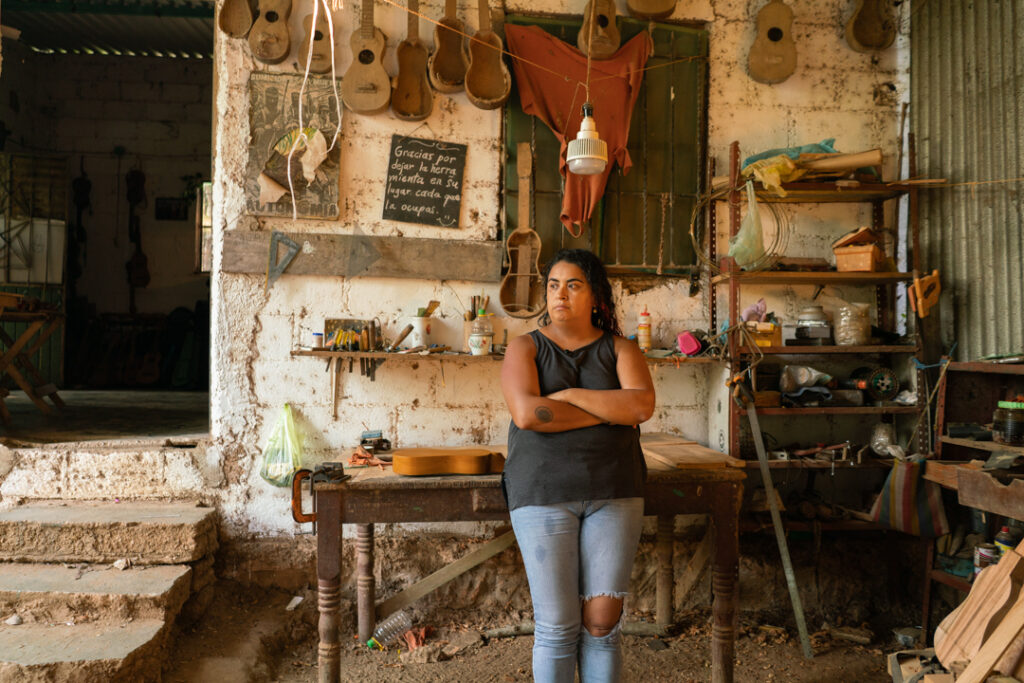
Gema, as she is known in the Altepee collective, during an interview. Photo: Aldo Santiago
They also shared that they have a historical registry from 11 years back, when Veracruz was taken over by military forces, organized crime, and different companies arriving to the region.
“We were watching a video we made 11 years ago and we noticed that in a certain way we had documented the militarization of Veracruz,” says Padua. At a time when “there was a drastic upsurge of security forces which obviously elevated the acts of violence which are now currently normalized.”
Security and the Interoceanic Corridor
According to a report from the first half of 2023, the Secretariat of National Defense (SEDENA) deployed around 1,296 soldiers for security operations in Veracruz. This was in addition to the security forces already required for projects related to the Interoceanic Corridor which crosses through both Veracruz and Oaxaca. At least 1,950 uniformed personal were distributed in 19 detachments and 3 naval stations, to daily cover the 2,600 kilometers of the Interoceanic Corridor.
Blanco explains that things began to change very rapidly a decade ago with the arrival of organized crime and militarization, when they announced that in the region they were going to create a special economic zone, which now they are calling the Interoceanic Corridor. “They began a large four lane freeway, they began to take the water. They were talking about a fiberoptic network, from the port of Coatzacoalcos. Many businesses and projects began to establish themselves here,” says Blanco.

Armed forces surveil the lines of Ferrosur in Coatzacoalcos, Veracruz (Cuartoscuro).
A member of the project guided the Avispa team through the region of Acayucan, Minatitlán, and Coatzacalcos, part of the route of the Interoceanic Corridor in Veracruz, in order to show us that the massive industrial and economic complex—the Industrial Corridor and the Maya Train connecting with the port of Coatzacoalcos—isn’t new, but has gradually been built.
Before the arrival of the government of Andrés Manuel López Obrador, extensive oil palm plantations (also known as African palm) had been planted in the region, a crop that requires immense quantities of water and the use of agrochemicals like glyphosate. Along with these plantations arrived the industrial palm oil processor Oleofinos, S.a. de C.V.
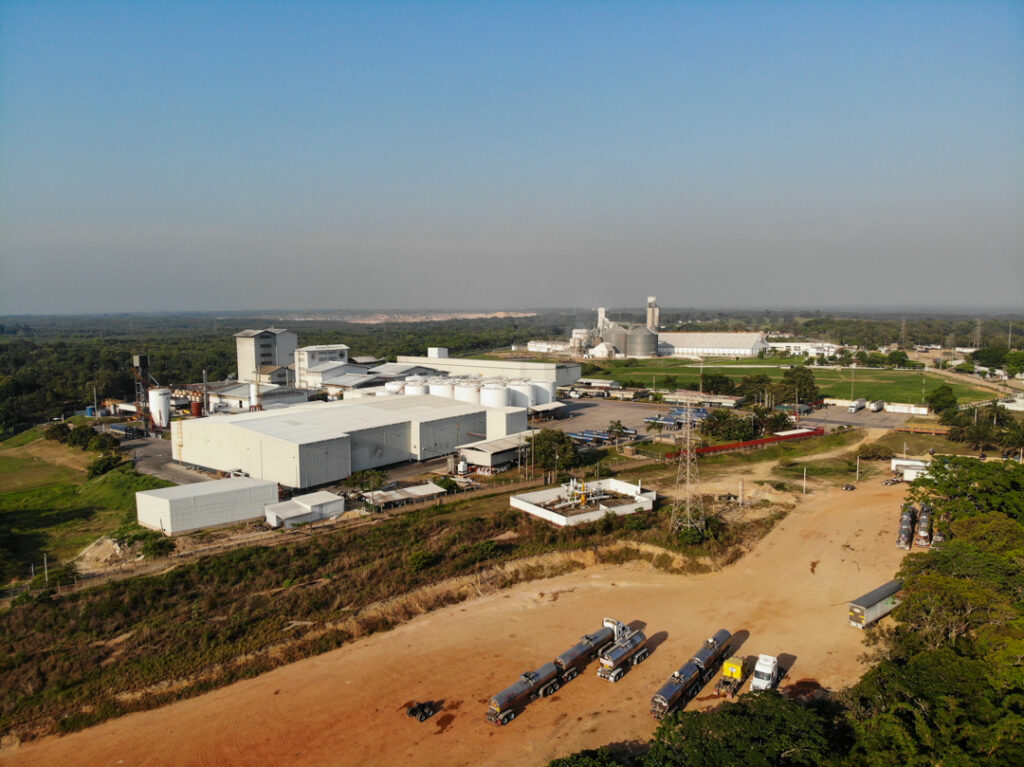
Palm oil processor owned by Oleofinos. Photo: Aldo Santiago
Next to this palm oil processing plant are the multinational corporations Harinera de Veracruz, S.A. de C.V. (MASECA), Campi Alimentos S.A. de C.V. (BACHOCO), among other companies, that have arrived to the region even receiving fiscal benefits. The state built them their own pipeline to feed them gas from the para-state company Petroleos Mexicanos (PEMEX), through the company Igasamex Bajío, S. de R. L. de C. V. The train lines pass right next to where these industries are established.
Just a few kilometers from these companies, there is also an open pit silica sand mine, where the company Materias Primas Monterrey operates, who in 2017 formed part of the Covia Materias Primas group, an affiliate of the United States Covia Holdings LLC. According to the Secretariat of the Economy, as of 2022, they processed more than 2,000 tons daily of this material.
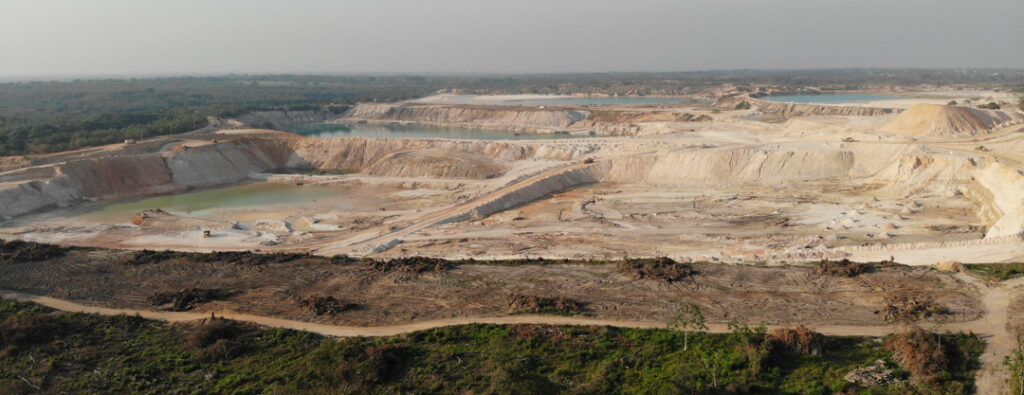
Open pit mining activity of the Covia Materias Primas group. Photo: Aldo Santiago
This region is very rich in biodiversity and culture “because the people have cared for the region and because their forms of life have allowed it. However, now there is the exploitation of oil deposits, they are opening more freeways around the train and a new gas pipeline,” explains Blanco.
The companies are circling like cultures, with hunger for carrion, explains the musician. In the first phase, the best portions of land of the Isthmus of Tehuantepec, both in Veracruz and Oaxaca, will be offered to the highest bidders, where at least ten industrial parks, also called development poles, will be built.
In July 2023, at a press conference, the governor of Oaxaca, Salomón Jara Cruz, and the governor of Veracruz, Cuitláhuac García Jiménez, affirmed that “there is a demand for each pole (industrial park) of more than 30 businessmen,” of which five parks have already been destined to three companies. These development poles are: Coatzacoalcos I, Coatzacoalcos II, Salina Cruz, San Juan Evangelista and Texistepec.
The Altepee collective is extremely concerned, not only about preserving the music, festivities, and traditions, but also about preserving life itself. “While these projects advance, the devastation also advances. We know that without water, a cedar tree can’t grow and you can’t make a jarana. Without water, we cannot live. That is the problem. Nobody talks about the immense quantities of water they are going to need for these industries. Nor do they talk about the waste they will generate,” shares Blanco with concern.
One of the young people who participates in the collective, Ángel Chávez, shows a very special interest, particularly amongst those his age and the other children. “The promise is that there is going to be progress and that the families are going to have an income. For me, as a young person, it is complicated, the same for the rest of the youth. The universities only teach us how to be workers for these industries. Many young people are accepting this discourse, but with that they are going to lose a lot of wealth, not monetary wealth, but cultural wealth and biodiversity. The memory will be lost,” says the musician Chavez, while sanding the wood for the new jarana.

Ángel playing music. Photo: Santiago Navarro F
This collective is aware that beneath the asphalt, beneath the industries, next to the gas and oil pipelines, there is a memory that could possibly be buried, together with forms of life that accompany it. “When we speak of the work that we do, it has to do with passing on knowledge so that there are also young folks who are interested in these issues,” says Blanco.
The Generational Change
While the musicians sand and put strings on the new jaranas, with a certain nostalgia they share that it is the elders who have cared for and preserved the music and territory. “You go to the assemblies and the majority of the people are in their 60’s or 70s, the youngest are in their 50’s. We are concerned because there is no new generation to care for mother earth, and for life,” Blanco remarks.
Furthermore, the elders are being pressured to sell their lands, which further undermines the possibility of handing them down to the next generation.
For example, in February, Coatzacoalcos, Veracruz hosted the so-called Territorial Planning Program of the Isthmus of Tehuantepec Region (POT-RIT), where they invited municipal presidents and community representatives of 33 entities located in the pathway of the Interoceanic Corridor (part of Veracruz). The objective is to create the legal framework to cede the lands to private capital, as the majority of this territory is currently registered for collective or common use.
This event was promoted by the federal government via the Secretariat for Agrarian, Land and Urban Development (SEDATU) and organized by the government of Veracruz in collaboration with academia and civil society.
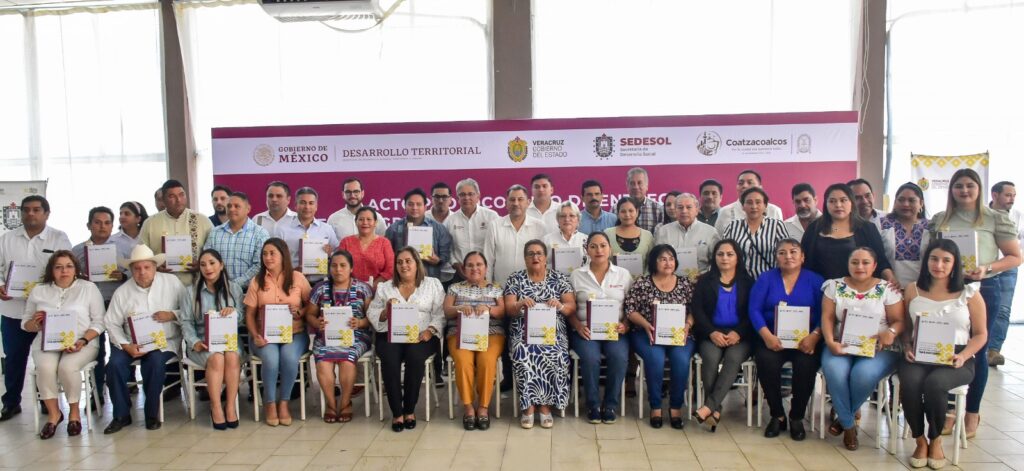
Event of the Territorial Planning Program of the Isthmus of Tehuantepec Region.
For these territories, the plan is to create the conditions needed for the industrial parks. In addition to water, sewer, electricity, and trash services, they also require sleeping spaces for the workers, hospitals, and schools, which will mean the privatization of the communal and ejidal lands.
The musicians sense that if the land is converted into private property, there will be no reason for the existence of the comuneros. Therefore, the assembly as maximum authority of a community will also disappear. “So, the youth will lose the opportunity to make decisions in assembly. That is a major blow to our communities,” adds Blanco.
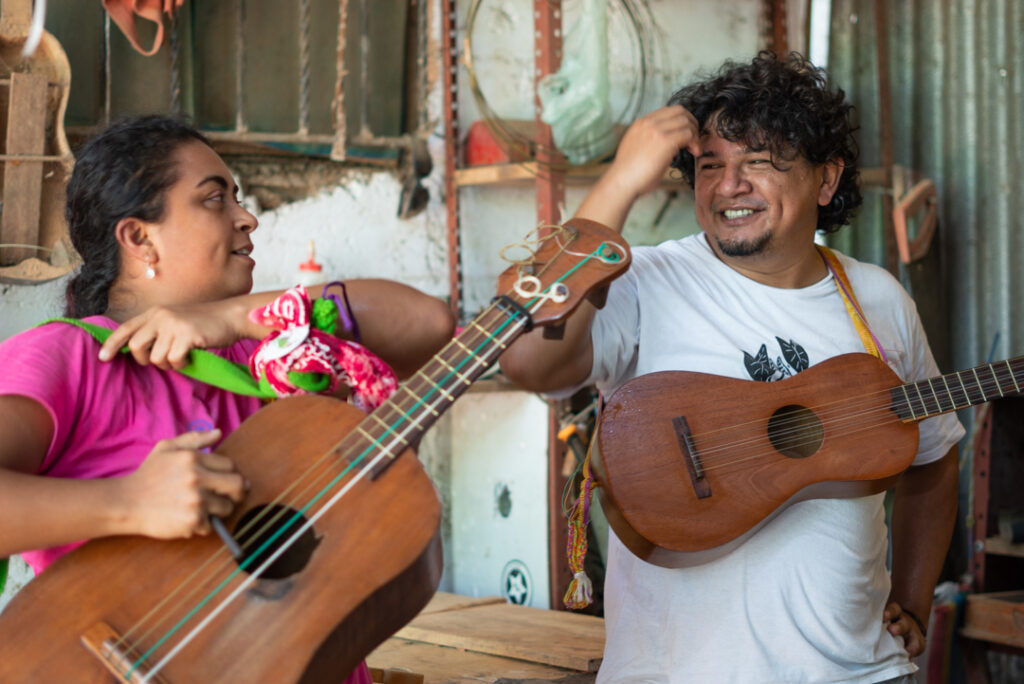
Gema and Sael share their music. Photo: Santiago Navarro F.
The musician emphasizes that this is why working with young people is so important. “Part of what we do is organize with the boys and girls,” he adds.
“Its no use if its only us organizing amongst ourselves, we have to organize with more people and raise the consciousness about what we are living through. Because these problems don’t only affect us, it is at the planetary level,” says the jaranero adding that, “something that is currently happening is the dehumanization, our sensitivity has been lost, we don’t care about where our water comes from, there is no interest in the forests, in the animals. We need to gather ourselves.”
Blanco is emphatic in pinpointing the issue of climate change. “It is important for the people to understand that the heat of more than 50 degrees Celsius has to do with the way we are living, and it’s our responsibility. We cannot think that the next generation is going to fix it, because the next generation will have nothing to fix. In the end it’s a call to action. If you don’t know what to do, there are people doing things. Reach out to them.”
The jaranero insists that we have to look beyond our own spaces, “although it seems like a lot of work, we have to do it. Think about the communities that are being devastated by mining, where they are cutting down forests, constructing dams. These are issues that concern humanity as a whole,” adds the musician.
Jarana and art, concludes another member of the collective, Ángel Escudero, are the tools with which they continue the struggle. “The memory is stored there and all it takes is a jolt to make us remember, and that’s what jarana does,” he reaffirms.


